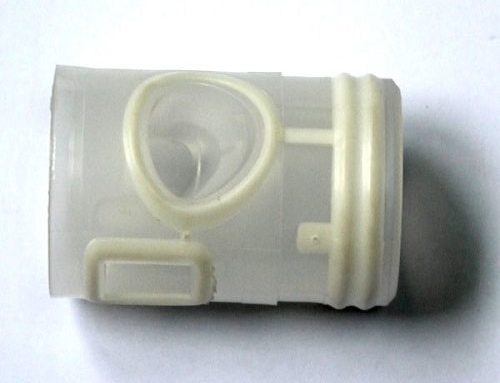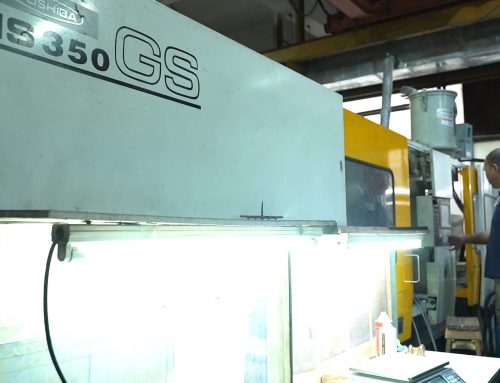In the process of continuous development of information society and economic globalization, development trend of mold industry is mainly development of mold products toward larger, more sophisticated, complex, economical and rapid. With continuous improvement of product technology content, mold production is developing towards informationization, digitization, non-image, refinement and automation. Mold enterprises are developing in direction of technology integration, equipment precision, product branding, management informationization and operation internationalization.
Mold Industry – Future development goals
Based on national mold output value of 60 billion yuan in 2005, annual average growth rate during “Eleventh Five-Year Plan” period is estimated to be 12% to 15%, which was about 112 billion yuan in 2019 and 350 billion yuan in 2030. Luo Baihui, secretary general of International Mold Association, said that after “Eleventh Five-Year Plan” efforts, China’s mold level has entered ranks of advanced levels in Asian by 2019. After 10 years of hard work, it will basically reach international level in 2030. China will not only become a big mold producing country, but also be a world leader in mold manufacturing. Several specific targets for 2019:
(1) Mold accuracy is ±0.001mm; shorten mold production cycle by about 40%.
(2) Numerical control rate of machine tools and application rate of CAD/CAM technology are up to 1 times higher than now.
(3) Backbone enterprises basically realize information management, pass ISO9000 and other quality management system certification.
(4) Proportion of high-level molds should be greatly improved. Proportion of medium-to-high-end molds with large technical content, such as large, precise and complex, has increased from about 30% today to 45% in 2019 and more than 50% in 2030.
(5) Domestic market share of domestic molds is less than 80%, and it will reach over 85% in 2019 and over 90% in 2030.
(6) Export of molds will be US$1.5 billion in mold exports in 2019 and US$3 billion in mold exports in 2030.
(7) It is necessary to expand variety of mold standard parts, improve their precision, increase production concentration, and achieve mass production. Coverage of mold standard parts has increased from about 55% today to 65% in 2019 and over 70% in 2030.
(8) Degree of commercialization of molds will reach 60% in 2019 and 65% in 2030 from 55%.
Mold Industry – Development of key products
Auto cover mould
Stamping dies account for more than 40% of total mold. Automobile cover moulds are mainly used for automobile, and also include cover moulds for agricultural vehicles, construction machinery and agricultural machinery. They are very representative in stamping moulds, most of which are large and medium-sized, with complex structure and high technical requirements. In particular, cover mould for car is more demanding and can represent level of stamping die. Such molds have a certain technical foundation in China, and have been supplied for mid-range cars, but level is not high and capacity is insufficient.
At present, satisfaction rate is only about half. Medium and high-end car cover moulds rely mainly on imports and cost hundreds of millions of dollars annually. Level of automobile cover parts is not high, capacity is insufficient, and long production cycle has become bottleneck of automobile development, which greatly affects development of vehicles. In the future, molds required for cars will be top priority. At 2010, car cover moulds of medium cars and following levels will be fully self-contained. In addition to some special high-end cars in 2020, all car cover moulds should be based on domestic support.
Precision stamping die
Multi-station progressive die and precision die represent development direction of stamping die, precision requirements and life requirements are extremely high, mainly for electronic information industry, automobiles, instrumentation, electrical appliances and so on. These two kinds of molds have already been basically established in country, foreign technology equipment has been introduced. Products produced by some enterprises have reached world level, but most enterprises still have large gaps, total amount is also in short supply, and imports are more. For micro-scale integrated circuits, matched with lead frames with lead pins 100 or more and gaps of 0.2 mm or less, precision micro-connectors with an accuracy of 5 mm or more. micro-motor core of 1.6 mm or less, and precision molds for picture tubes and electron guns are top priority of development. Develop large multi-station progressive die for automotive panels and other large and medium-sized stampings should.
Large and precision plastic molds
Plastic molds account for nearly 40% of total mold, and this proportion is still rising. Large-scale injection mold for plastics and home appliances in plastic molds, precision plastic molds for integrated circuits, a multi-layer, multi-cavity, multi-material, multi-color precision injection molds for electronic information industry and machinery and packaging, plastic profile extrusion die, pipe and nozzle die for new building materials and water-saving agriculture, although there is a fairly technical basis and is developing rapidly, but technical level is still far from foreign countries. Total supply is also in short supply, it imports hundreds of millions of dollars every year and should be focused on development during 11th Five-Year Plan period.
Main mold standard parts
At present, standard mold parts with large output in China are mainly mold bases, guide parts, push rod push tubes, elastic elements, etc., but quality is poor and variety size is small. These products not only have a large number of domestic supporting needs, but also have a good export prospects. They should continue to develop vigorously. Nitrogen cylinders and hot runner components have not been produced by formal professional factories in China, mainly relying on imports. They should raise level on existing basis, form standards, and organize large-scale production.
Other high-tech molds In die-casting molds, which account for nearly 8% of total molds, large-scale thin-walled precision die-casting molds have high technical content and are difficult. Although magnesium alloy die-casting molds and vacuum die-casting forming molds have just started, they have good development prospects and are representative. Radial rubber tire mold is also development direction, active mold technology is the most difficult. Some rapid molding techniques combined with rapid prototyping technology and corresponding rapid economical molds have good prospects for development. Develop these high-tech molds during “Eleventh Five-Year Plan”
Mold Industry – Development of key technologies
Today, with rapid development of high-tech, in order to ensure rapid development of mold industry belonging to high-tech industry, many common technologies in mold industry must also be upgraded to next level. It is necessary to continuously develop, promote applications and actively apply high-tech technologies. Main measures are as follows:
(1) Develop software with independent intellectual property rights, suitable for China’s national conditions, with high level of mold design, processing and mold enterprise management, continuously improve intelligence and integration of software, and promote application.
(2) Promote application of high-speed, high-precision machining technology and develop corresponding high-speed and high-precision machining equipment includes high-speed high-precision machining. In next 15 years, China’s machine tool industry should gradually provide corresponding equipment suitable for high-speed and high-precision processing of molds to mold industry. If possible, recommend to develop high-precision mold manufacturing equipment with independent intellectual property rights and accuracy of 0.0001mm.
(3) Further development, improvement and application of rapid prototyping and economic mold manufacturing new technologies.
(4) Vigorously develop, promote information technology and digital technology. For example, reverse engineering, concurrent engineering, research, development and application of agile manufacturing technology; including large-scale progressive die, high-precision and high-complexity high-tech advanced mold 3D design, manufacturing technology development; R&D of body mold digital design and manufacturing systems including stamping process design system, mold profile design system, forming analysis system, mold structure design system, mold CAM system and stamping expert consultation system; mold integration, flexibility and automatic processing technology and network Virtual technology, etc.
(5) New technology for mold manufacturing. Energy-saving, material-saving technology for mold manufacturing, mold heat treatment, surface finishing and new surface treatment technologies.
(6) Development, serialization and correct selection of high-performance mold materials.




